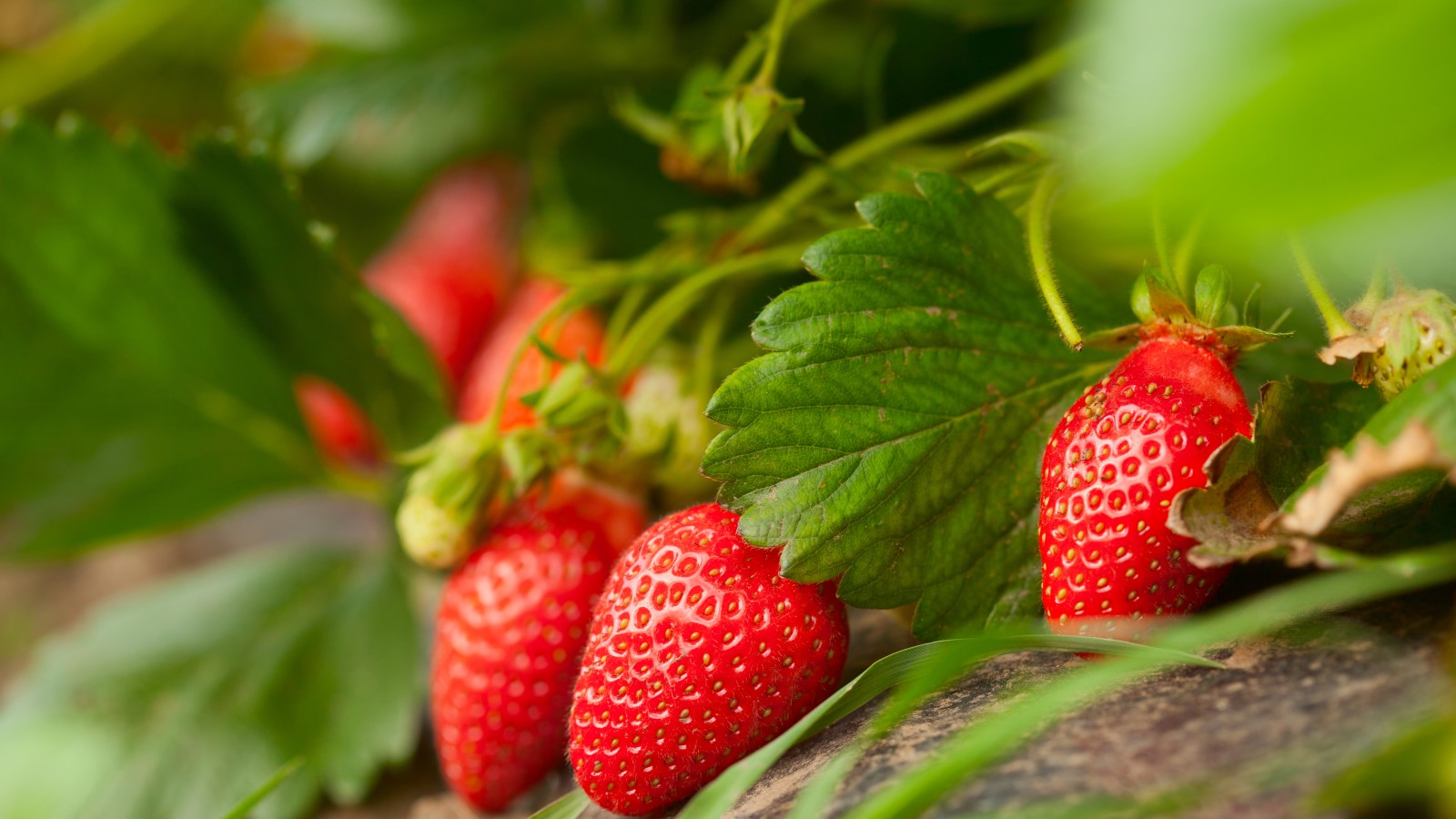
Q. I am growing strawberry plants at home in my backyard and I have noticed lots of their leaves turning brown or yellow. What could be causing this and what can I do to help my strawberry plants?
A: Any changes in the color of plant foliage is a tell-tale sign that something is wrong with the plant. There are several reasons why leaves on strawberry plants could turn brown or yellow, namely it is likely down to watering issues, lacking nutrition, disease, or pests.
When growing strawberries, everyone wants healthy plants and bumper crops of delicious fruit. However, there are many reasons why plants may not thrive and we look at the main factors that could cause your strawberry plant’s foliage to discolor.
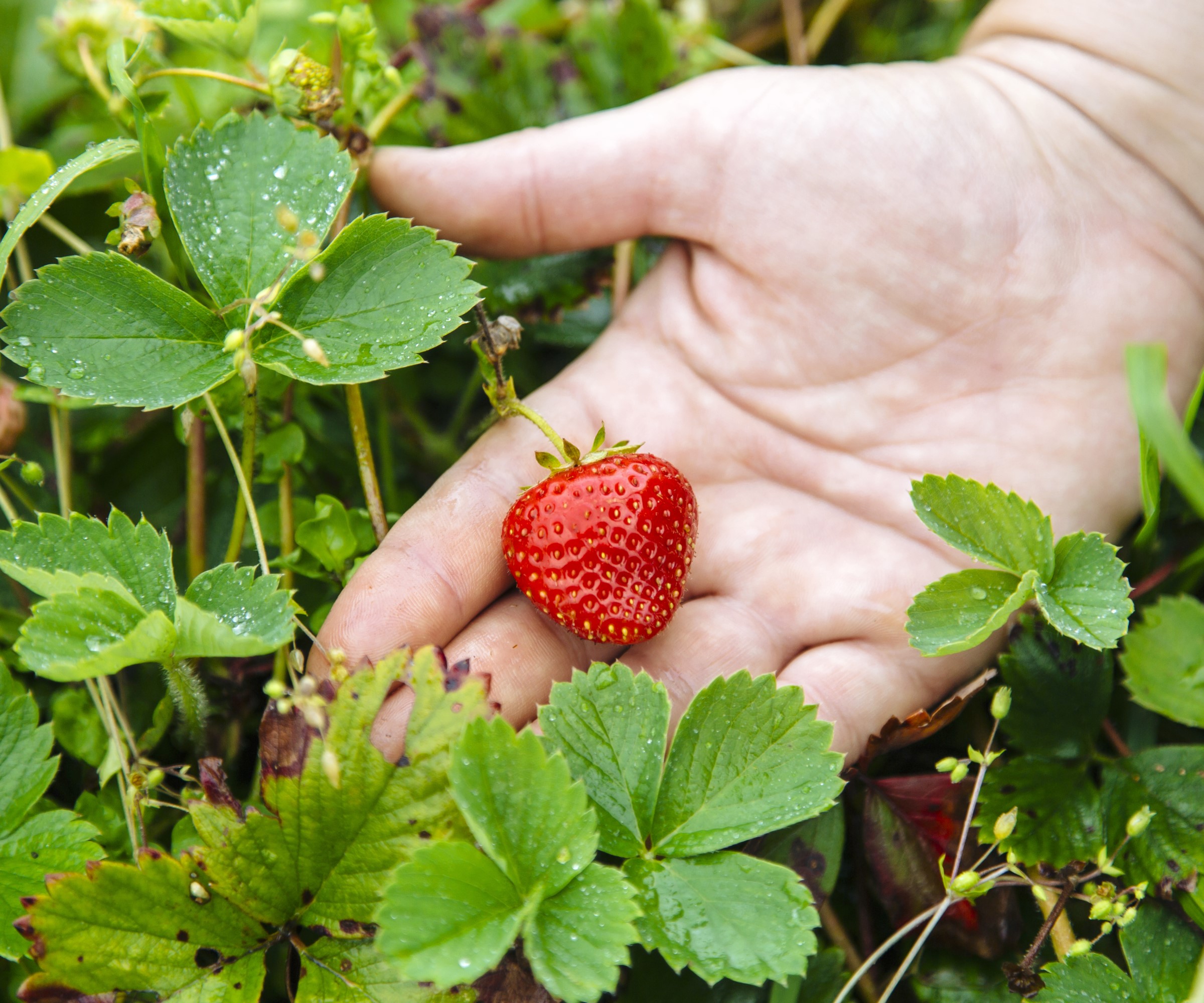
Why could strawberry leaves turn brown?
Dominique Kline, Farm Manager at The Hope Farm in Fairhope, Alabama, warns that foliage coloration is a major indicator of the vitality of a strawberry plant and when the color varies away from the ‘consistently deep green leaves’ of a healthy plant, then it is a potentially worrying sign.
‘When a plant is failing to thrive, one of the first signs is a breakdown in chlorophyll, which lends leaves their green pigment,’ she explains. ‘This breakdown can be expressed through a range of colors, but browning is the last stage before defoliation. Without enough healthy leaves to produce energy, plants will ultimately die.’
Leaves changing color can both be down to man-made reasons caused by the gardener, or due to environmental factors. They can be caused even before planting strawberries by failing to assess the soil and any of the issues can impact when to pick strawberries.
The major culprits that cause strawberry leaves to turn brown or yellow include watering – both watering too much and too little – and failing to fertilize plants properly. A number of common pests and fungal diseases could also cause similar-looking issues to strawberry plants.
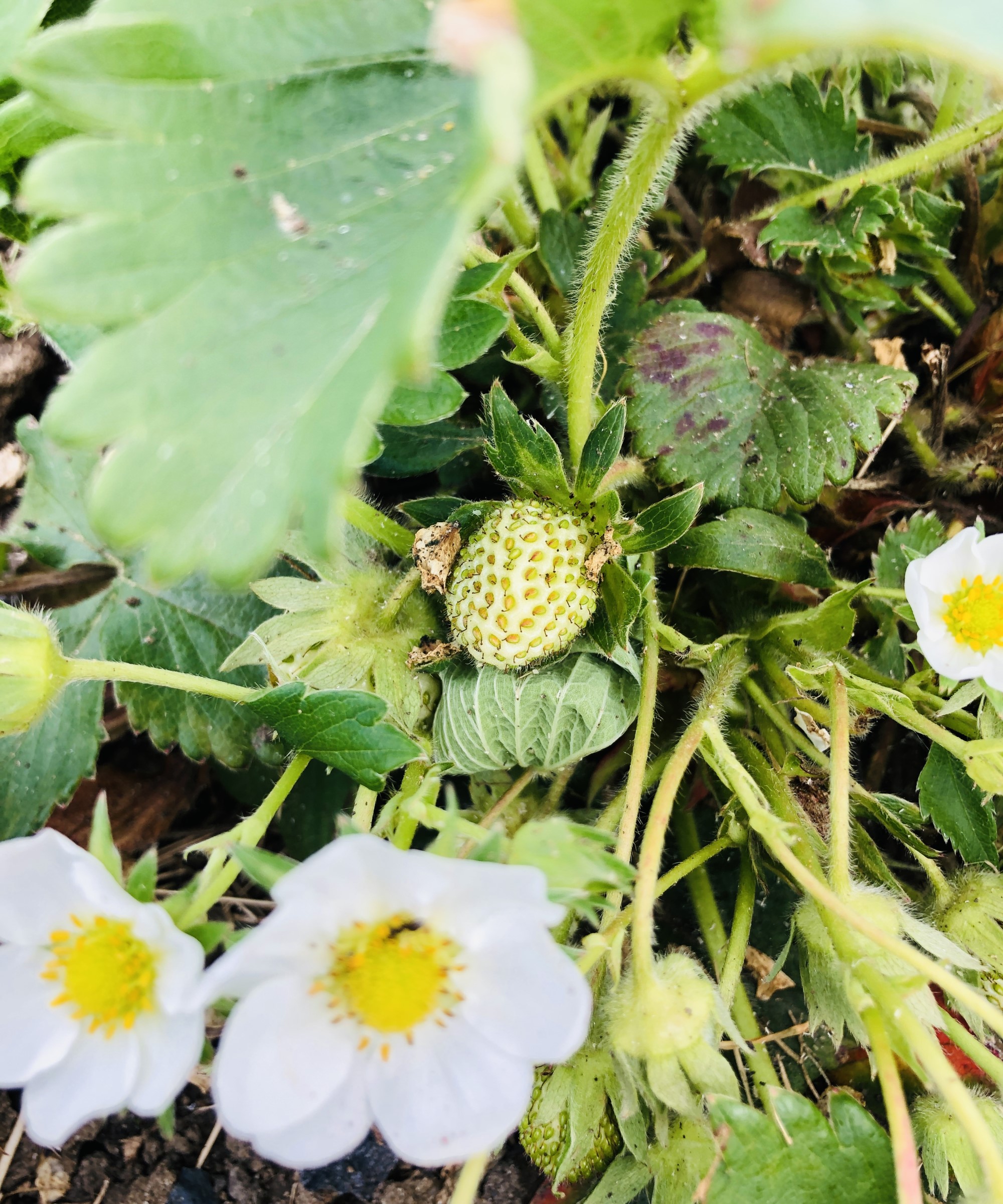
1. Incorrect watering
Inconsistent watering is the most common reason for strawberry leaves turning brown and both overwatering and underwatering can be the culprit. Overwatering causes leaves to potentially wilt and discolor and can eventually lead to rot and fungal diseases.
Ben Hilton, Founder and Editor of The Yard and Garden, explains that overwatering restricts the absorption of oxygen and ‘effectively drowns the plant’. He adds: ‘This prevents the production of chlorophyll and consequently turns the leaves yellow. The classic symptom of overwatering will be yellow leaves that are soft in texture and often turn dark brown on the edges. This can develop into root rot, which can be seen around the lower portions of the plant crown or runners directly around the crown.’
Underwatering can cause leaf tips to turn yellow or brown and the key is to not let the soil dry out, but also do not let the soil get soggy and waterlogged. It is thought that strawberry plants want an inch of water a week, though that can alter during periods of hot weather.
Whether out in the ground or you are watering plants in containers, always check the soil an inch or two under the surface to better assess moisture levels in the soil. An ideal method to check the moisture levels in the soil is to use a meter, such as the XLUX Soil Moisture Meter available on Amazon that can give you instant results on how wet the soil is below the surface.
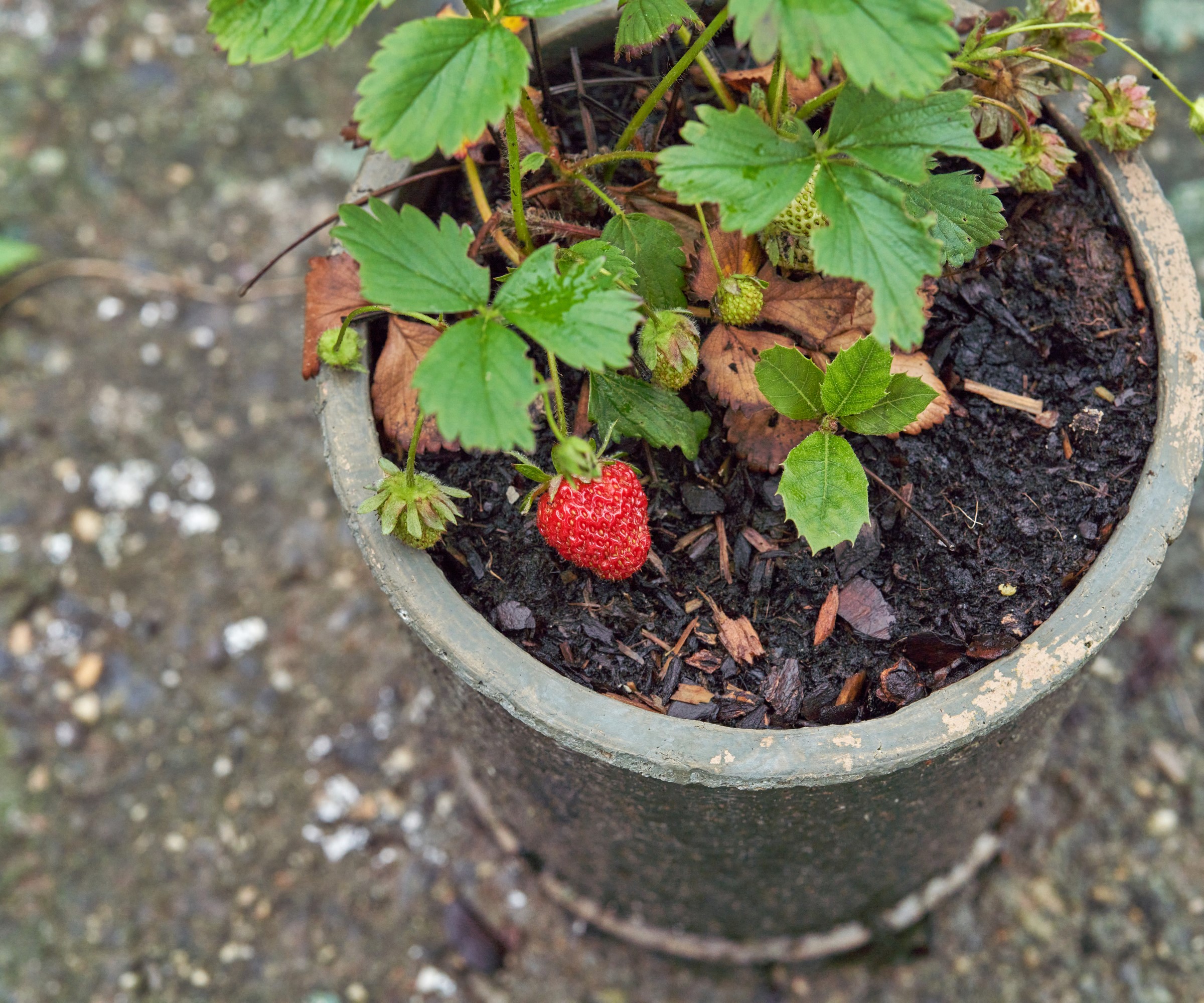
2. Lack of nutrients
Any deficiencies in the essential nutrients of nitrogen, phosphorus, or potassium could result in yellowing leaves on a strawberry plant.
Dominique Kline claims that nitrogen deficiency is ‘one of the most common reasons for yellowing, as it aids in the photosynthesis process’. A potassium deficiency can cause leaves to turn yellow or brown along the edges, while a lack of phosphorus more often causes a reddish-purple tint on the leaves.
The presence of any of these signs of foliage discoloration can be combated by using targeted fertilizers. It is recommended to test the pH of the soil and also test for any nutrient deficiencies prior to planting crops. You can purchase soil test kits to use at home, for example the Luster Leaf Professional Soil Kit available at Amazon, that can help you discover both the pH and nutrient make-up of your ground.
Any plant fertilizer will have the NPK shown as fertilizer numbers on the packaging and any feed must be applied at the recommended rate. When planting strawberries, apply a balanced fertilizer to the site and then follow-up by fertilizing strawberries annually in spring with a balanced feed. A mulch of homemade compost annually can also give plants a well-rounded feed of all the important nutrients.
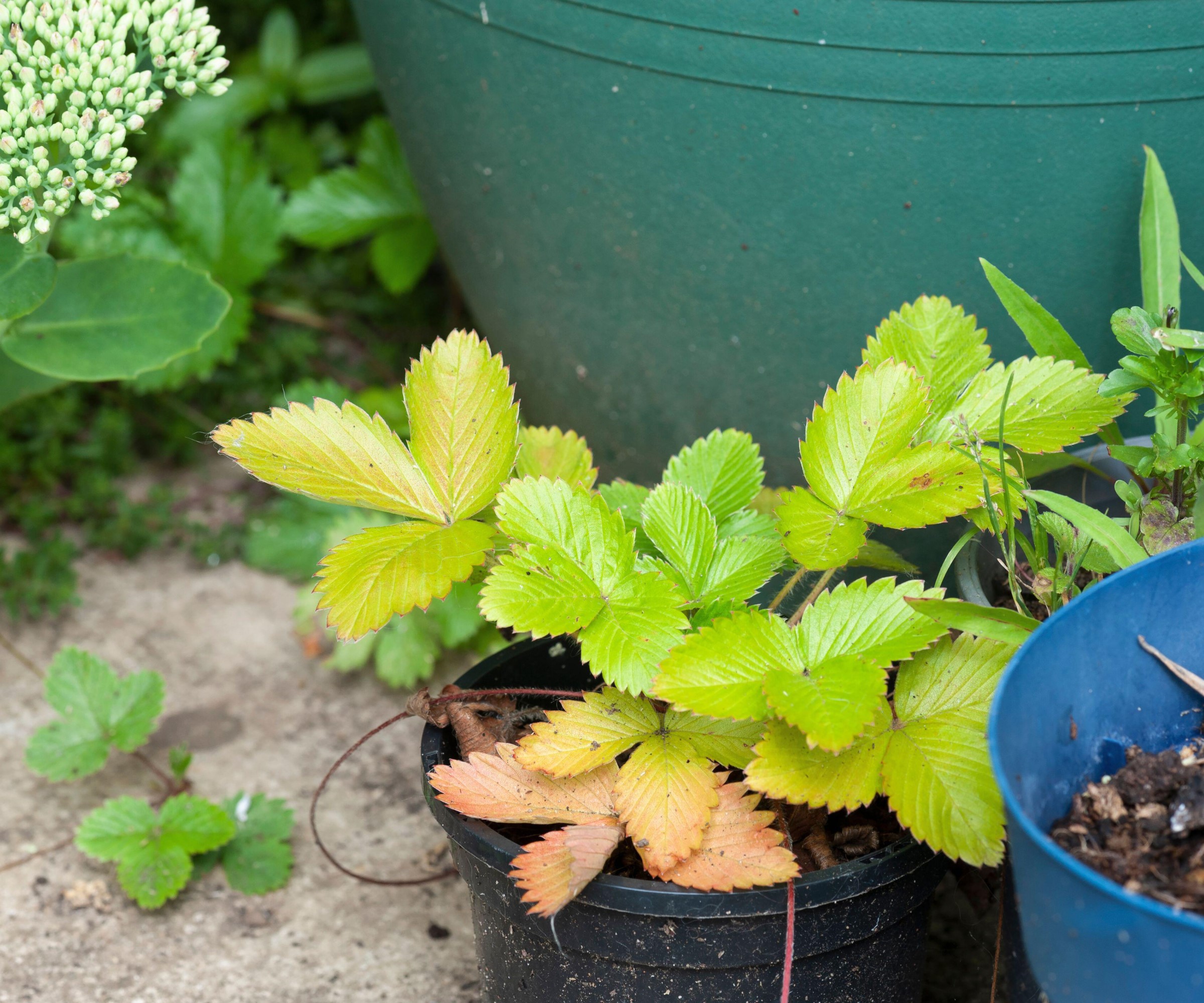
3. Pests
There can be many common strawberry pests that can be to blame for leaves turning brown or yellow on a strawberry plant. Pests are a common problem for strawberries and the usual suspects include the likes of aphids, spider mites, thrips, lacewings and ladybugs. All of these can suck sap out of the foliage and cause leaves to turn yellow.
There are many ways to organically manage such pests. This includes encouraging predatory insects, such as lacewings or ladybugs, or using insecticidal soap to control pests, for example Captain Jack's Insecticidal Super Soap available at Walmart. Planting strawberries with the likes of marigolds, borage, or lupins can help repel pests, while vegetables such as onions and garlic are good strawberry companion plants along with herbs like thyme, chives, and mint.
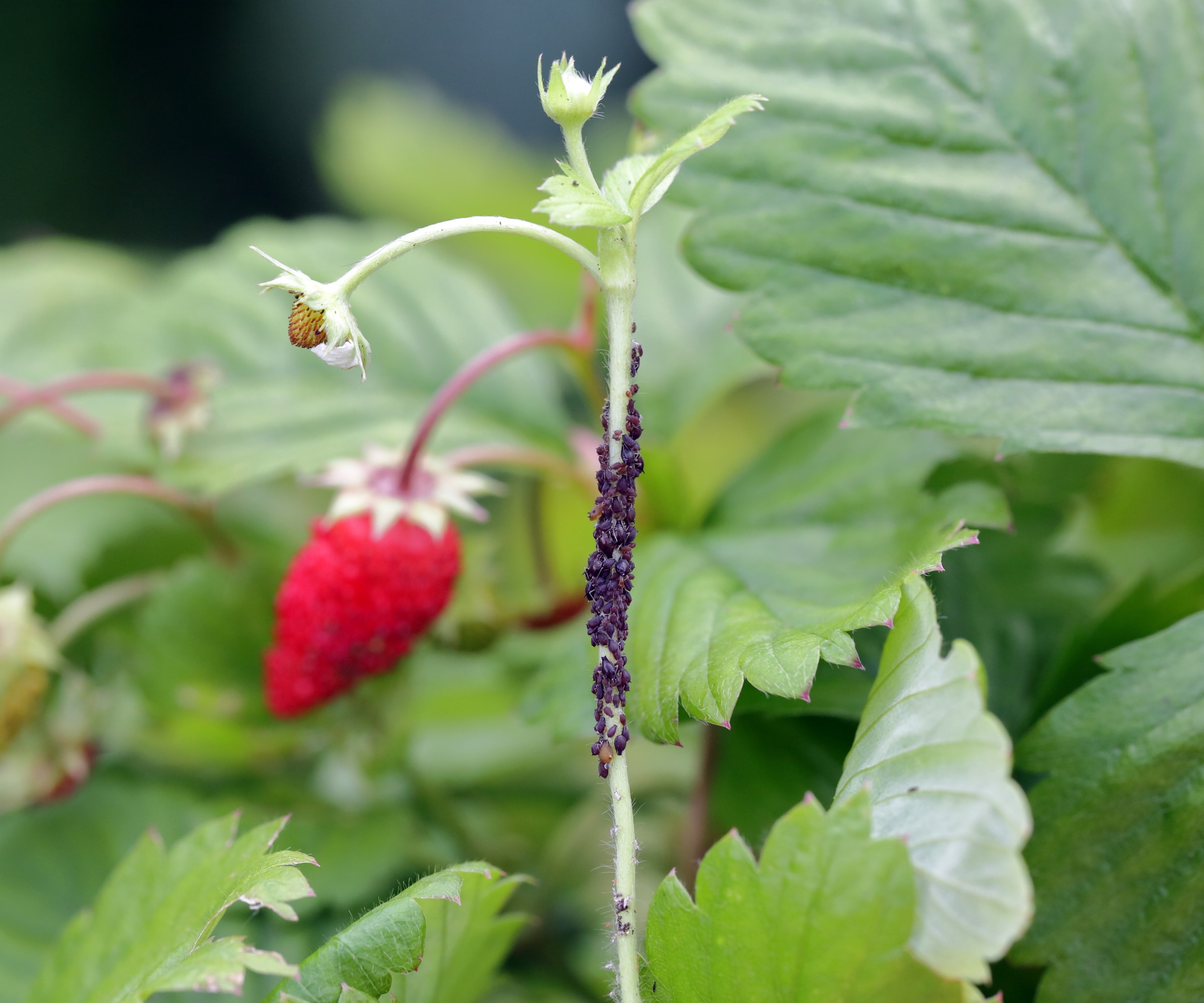
4. Disease
Finally, disease can also discolor the leaves of strawberry plants, turning the leaves brown or yellow. Verticillium wilt can present as yellow or brown leaves, while other fungal diseases like botrytis blight and anthracnose can cause brown spots, which can eventually spread to turn the entire leaf brown. Another common strawberry disease is gray mold, from which an infected plant sees brown spots appear on leaves before the foliage gets covered in a fluffy gray mold.
Julia Omelchenko, resident botany expert for the NatureID app, recommends that you react quickly to potential disease and remove leaves in a timely manner. She adds: ‘To prevent fungal diseases, you should treat strawberry beds with broad-spectrum fungicides every fall and early spring.
‘If any symptoms appear, you'll need to remove all affected pieces of plants or whole bushes and treat the bed with fungicides.’
One example of a broad-spectrum fungicide you can use against common strawberry pests and diseases is the Garden Safe Fungicide available from Walmart.
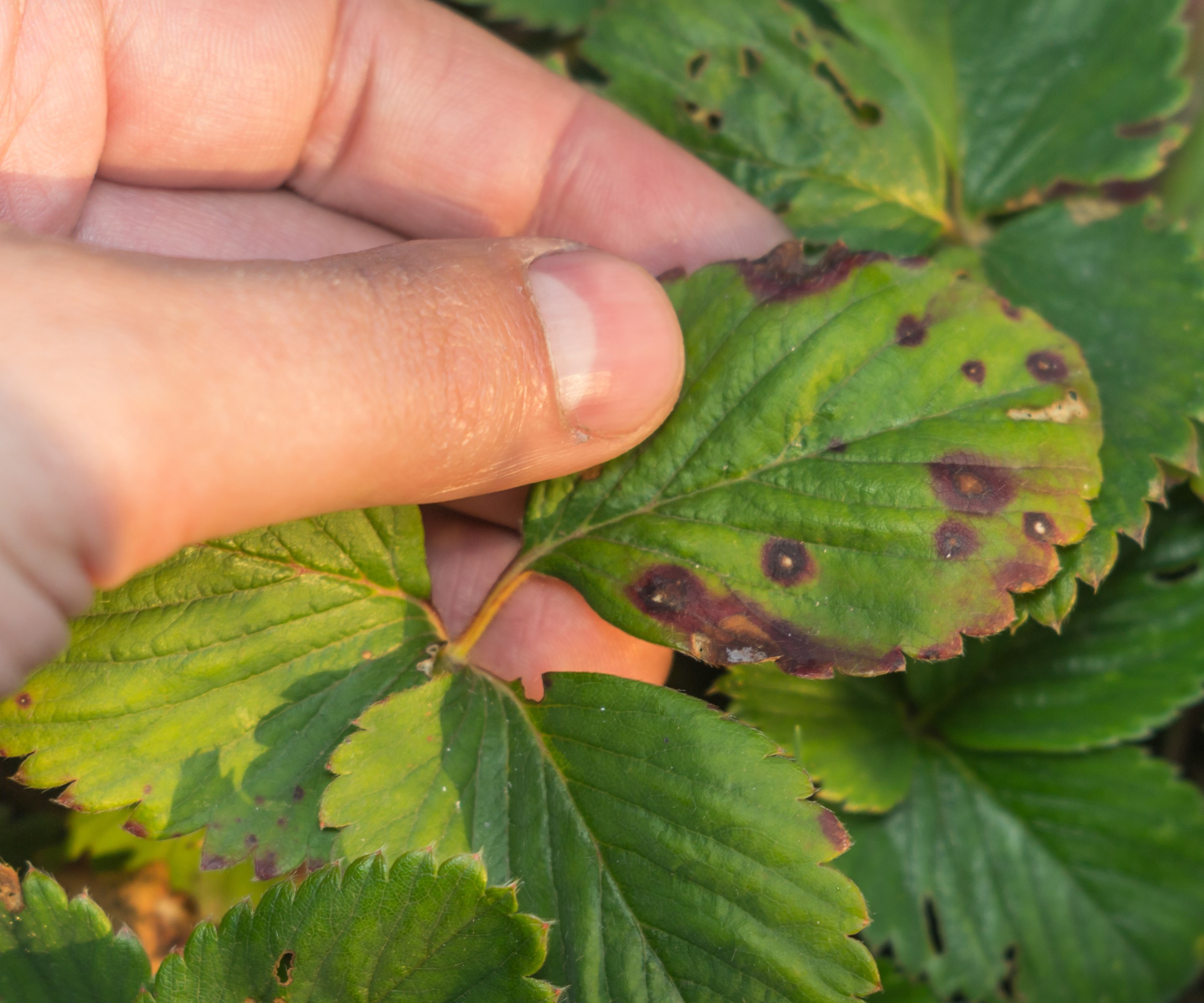
FAQs
Should I remove brown leaves from the strawberry plant?
Dominique Kline from The Hope Farm recommends always removing damaged or dead leaves from a healthy plant. She advises that foliage is cut off using a sanitized blade or shears and leaves are cut all the way back to the crown. Failing to do this can prevent any issues spreading further and causing more problems to your crop. Always using clean garden tools helps to avoid spreading diseases, and make sure to clean and sharpen pruning shears after use.
‘Leaving unhealthy leaves on your plants can invite disease or insects that favor vulnerable, weakened plants, and can even spread the issues to previously healthy plants,’ says Dominique. ‘If you do suspect a major fungal or bacterial disease, remove the affected plants entirely and dispose of or destroy them at a safe distance from your other crops.’
The issues outlined above can affect any type of strawberry and be a problem whether you have the fruit out in a field or you are growing strawberries in pots. Be careful with your watering and be vigilant with your crop to spot any signs of problems early and take action as required.
Any sign of yellow or brown leaves needs to be investigated quickly to get to the route of the problem. Many of the common reasons for brown leaves can be dealt with, and failure to act quick can make the problem worse.







